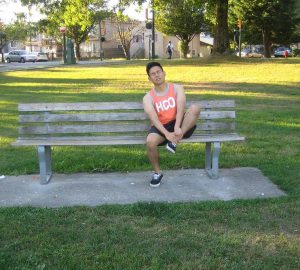An ankle avulsion fracture happens when a tendon or ligament is disconnected from the bone and usually pulls a small piece of bone with it. An avulsion fracture can happen in any part of the body and usually at the joints but the ankle is one of the common areas for it to happen.
If an ankle is twisted or sprained forcibly, this force passes through the tendons and ligament which causes them to rupture and sprain. When the force is strong, the tendons or ligament ruptures and pulls off a small piece of bone.
Indications of an ankle avulsion fracture
- Instant and rapid swelling of the affected area
- Pain happens after forcibly twisting the ankle.
- Bruising
If an ankle is twisted or sprained forcibly, this force passes through the tendons and ligament which causes them to rupture and sprain. - Difficulty bearing weight
- Difficulty moving the ankle
- Swelling and tenderness of the area when touched
Causes
- People playing basketball, football and soccer are susceptible to develop an ankle avulsion fracture.
- Performing high degree of muscle movement and strong muscle contraction.
- A strong pull
- Impact injuries
- Falls
Treatment
- Take plenty of rest especially the affected ankle. Avoid performing activities that cause pain and promote fast healing of the condition.
- Apply an ice pack on the affected ankle for at least 20-30 minutes every 3-4 hours to lessen the swelling and pain. Avoid applying ice directly on the skin to prevent frostbite. Wrap the pack in a clean towel or cloth before applying on the area. Avoid sleeping with the pack left on the affected area.
- Compress the affected ankle. Wrap the area using compression bandages to protect the area from injuries. Avoid wrapping it too tight to prevent disruption of the blood circulation and worsen the condition.
- Elevate the area above the level of the heart for at least 3 hours every day for 3 days to lessen the swelling and bruising of the area. Another alternative is to raise the injured ankle on pillows to keep it elevated comfortably.
- Take the prescribed anti-inflammatory medications such as ibuprofen or paracetamol to lessen the pain and inflammation.
- For a severe ankle avulsion fracture, especially in children, immobilization of the joint is necessary for at least 6-8 weeks with the help of a cast. A plaster cast is used in managing fractures to prevent immobility and heal the bone in the correct position.
- Use crutches or a walker to lessen the stress placed on the affected ankle.
- Seek the help of the physical therapist for some rehabilitation exercises that will stretch the tendon, improve the flexibility of the affected joint and promote healing of the bones.
Disclaimer
The material posted on this page for ankle avulsion fracture is for learning purposes only. If you want to learn more about fractures including an ankle avulsion fracture, register for a first aid course with a training provider near you.
FACT CHECK
https://www.physio-pedia.com/Avulsion_Fractures_of_the_Ankle


